
It was a crisp 14 degrees when I headed out into the snow to get a few pictures. The Virgin River flows out from Zion and through Springdale, and then right alongside our hotel. In the background is The Watchman, a towering 6,545-foot tall sandstone mountain that sits within the boundaries of Zion National Park.
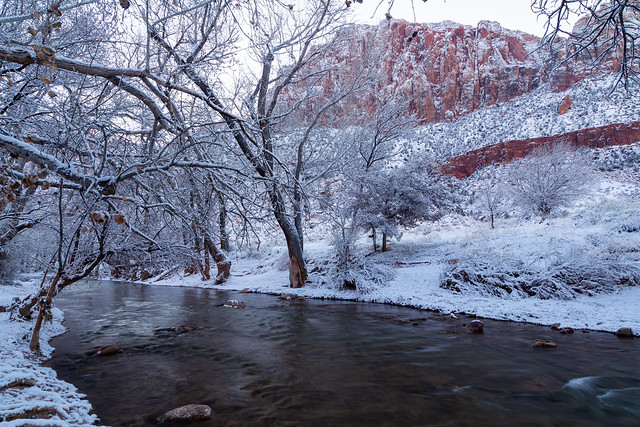
We bundled up and then excitedly headed into Zion National Park. The snowfall was thicker in the park, but luckily the roads were still drivable (a relief since I'm from the south and am not great at driving in winter weather).
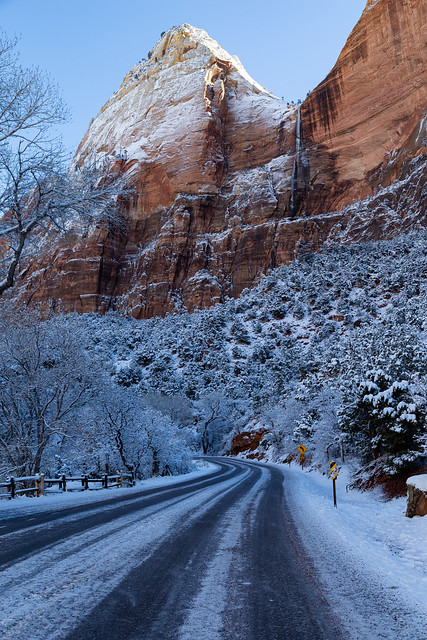
The snow looked like someone had dumped a bunch of powdered sugar over everything.

The fluffy white snow also contrasted nicely against the deep red rocks of the mountains.

It was hard to not stop every five feet to take pictures. It was incredibly beautiful.
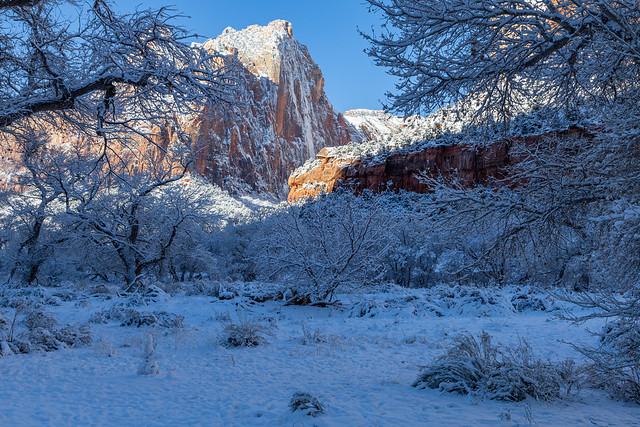
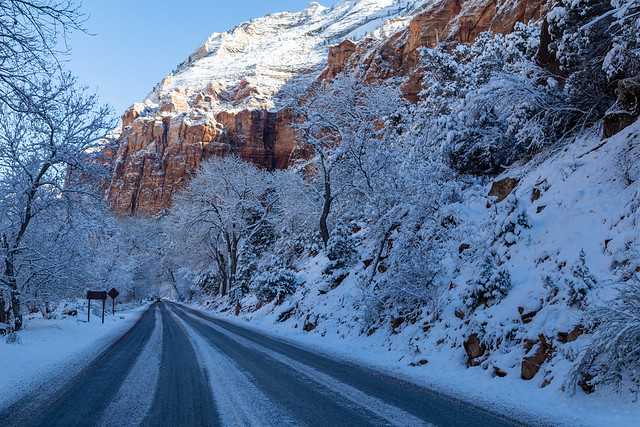
Zion National Park was established in 1919 and protects about 229 square miles of natural beauty. The park was originally named Mukuntuweap, a Southern Paiute word that can be roughly translated to mean "straight canyon." It was later changed to Zion, a name given to the canyon by Mormon settlers in the 1860s. The change was made because it was thought that Mukuntuweap would be too hard to pronounce, which would deter people from visiting the park. The name Zion is from the Bible, and means a place of peace or refuge or a sanctuary (it's not named after the city in The Matrix, like I assumed).
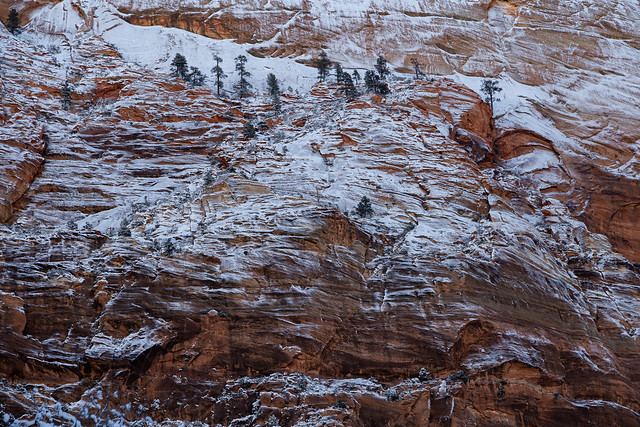
The National Park is large (at 146,597 acres), but Zion Canyon is surprisingly small. It's only about 15 miles long, which means it takes just about 30 minutes to drive from one end to the other. One of the reasons why we decided to visit Zion in the winter is because it was the off-season, and you can drive your car into the park. Most of the year, the park is closed to private vehicles and you have to use a shuttle to get around. It's easy to see why. It was still busy when we were there, even on a cold weekday. Parking spaces are limited in the park, and they quickly filled up.

We stopped at the Court of the Patriarchs, and walked around for a few minutes to take a few pictures of the fluffy snow.
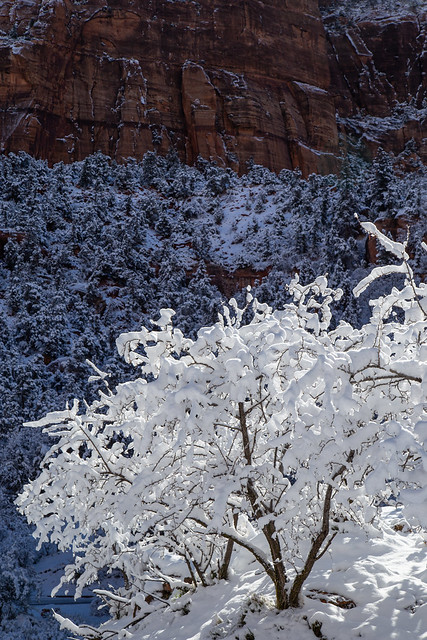


There is a short trail here that runs uphill to an overlook. I'm thankful this sign was here as a warning...
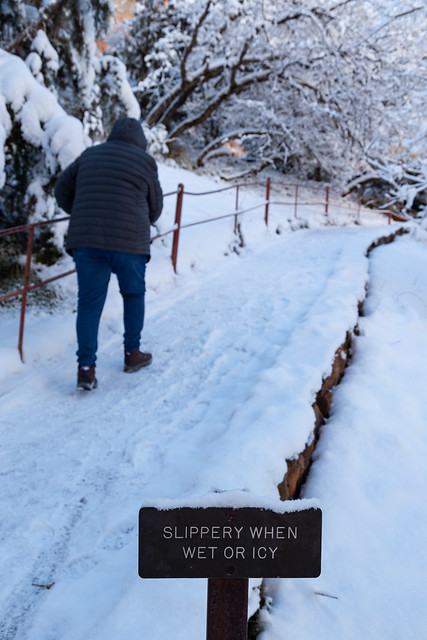
And the view from the overlook, of the three Patriarchs (named for the Biblical figures Abraham, Isaac, and Jacob).

Mormon settlers moved into the Zion Canyon in the 1860s, but the area had been explored and lived in by various Native Amerian people over the course of several centuries.



We drove deeper into the canyon, stopping often to get pictures...
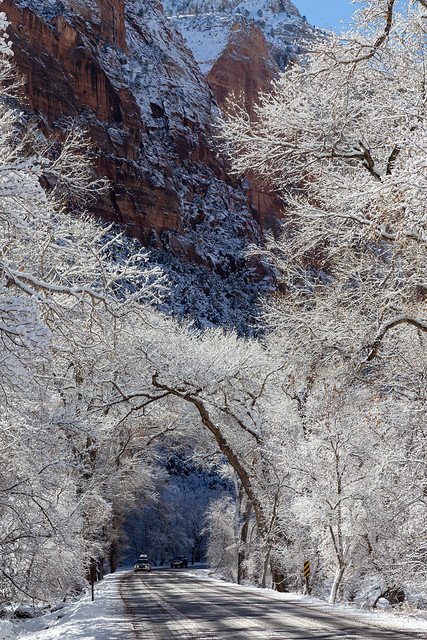


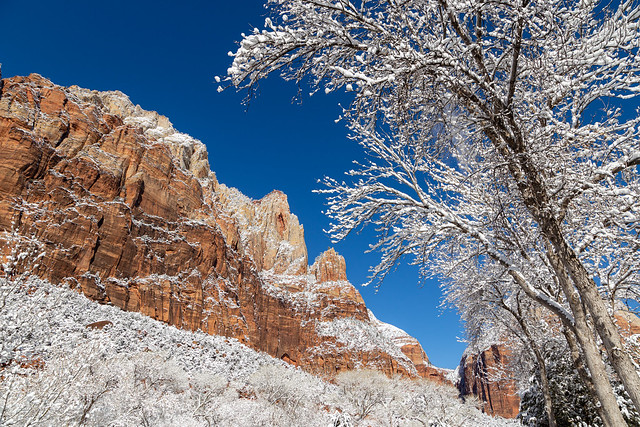
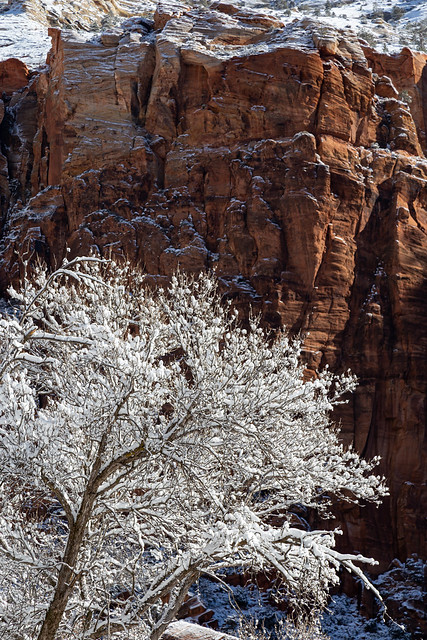
This tall tree actually sits in front of the park's lodge.

We stopped at another overlook which provided this view of the Great White Throne, a monolithic mesa that is 6,747 feet tall. The Great White Throne was named by a Methodist minister, who felt that the mountain was magnificent enough to represent the throne of God.

Next to the Great White Throne is The Organ, a 5,080-foot tall sandstone mountain.
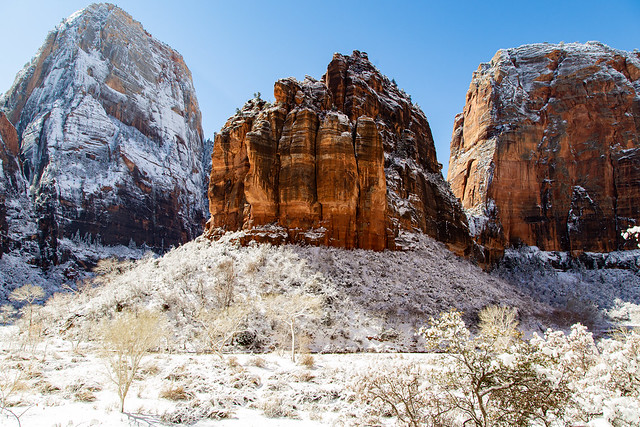
And a closer view of The Organ:

The same minister who named the Great White Throne also named Angel's Landing and the Court of the Patriarchs. Angel's Landing is a sandstone cliff that is so narrow that he said that only angels could land on it. There is a trail to the top of it now, but it is an extremely difficult and harrowing climb. We wisely decided to avoid it, since it would be coated in ice and snow. But we did decide to do another trail in the park, which will be covered in the next installment - Stay tuned!

No comments:
Post a Comment